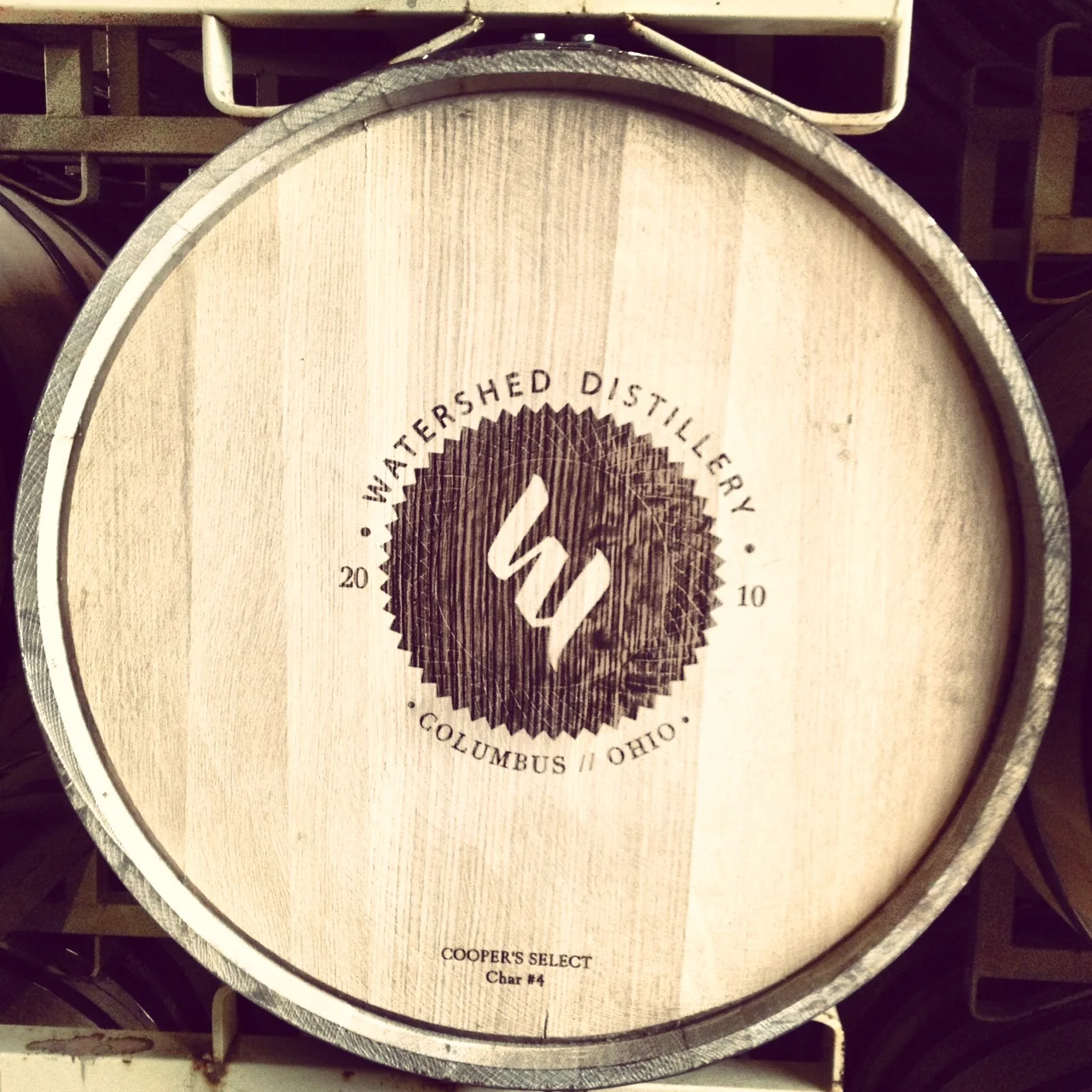Watershed Distillery and the Art of Whiskey Whispering


When hearing the word “bourbon,” you may think of mahogany leather sofas, wrap-around front porches, or J.R. Ewing. Dave Rigo of Watershed Distillery stares at his oak bourbon barrels and ponders something considerably less nostalgic: his 401(k). Since co-founding Watershed in 2010, his “kinda crazy idea” of making spirits in Columbus has exploded into an intoxicating force. With the Kentucky Derby less than two months away, I had bourbon on the brain and toured Watershed to learn more about the process of microdistilling.
“We make vodka and gin to support our bourbon habit,” Rigo said.

Rigo and his partner Greg Lehman didn’t fall into microdistilling immediately. The Watershed concept was actually the duo’s 20th business plan, after being informed by their attorney that their first 19 ideas “sucked.” After lots of passionate research and some out-of-state apprenticeships, they got started in a 2,000-square-foot Grandview warehouse. They recently expanded to 4,700 square feet and now produce up to 5,000 bottles a month. Their liquor is available in 150 liquor stores and 500 bars/restaurants in Ohio, as well as a handful of outlets in Kentucky and New York. They shipped their first order to Chicago this week.
Watershed produces four spirits: Four Peel Gin, Bourbon Barrel Gin, Vodka, and Bourbon. Gin is their signature item, which has been referred to as “The Gateway Gin” for its mild disposition. Many microdistillers use four or five botanicals when making their gin; Watershed uses eight. Rigo and Lehman also include the lowest possible amount of juniper in their gin (51%), making it more palatable for those who don’t like drinking Christmas trees. Watershed’s vodka is Ohio corn based and has been praised for its clean finish, thanks to the painstaking removal of methanol. As for the beloved bourbon, it’s double distilled and aged for roughly two-and-a-half years using a thoughtful mix of Ohio corn, wheat, rye, and spelt. Rigo is currently tinkering with malted barley for a possible new bourbon flavor and enlisted the expertise of a local molecular biologist to grow a proprietary strain of yeast.
According to The American Distilling Institute, there will be 400-450 boutique distillers in the United States and Canada by the end of 2015. Watershed aims to be one of the best of them. Until then, Rigo will gaze at his wall of 53-gallon bourbon barrels that won’t be ready until a few more years.
“We’re just sitting and watching our future in those barrels,” he laughed.



